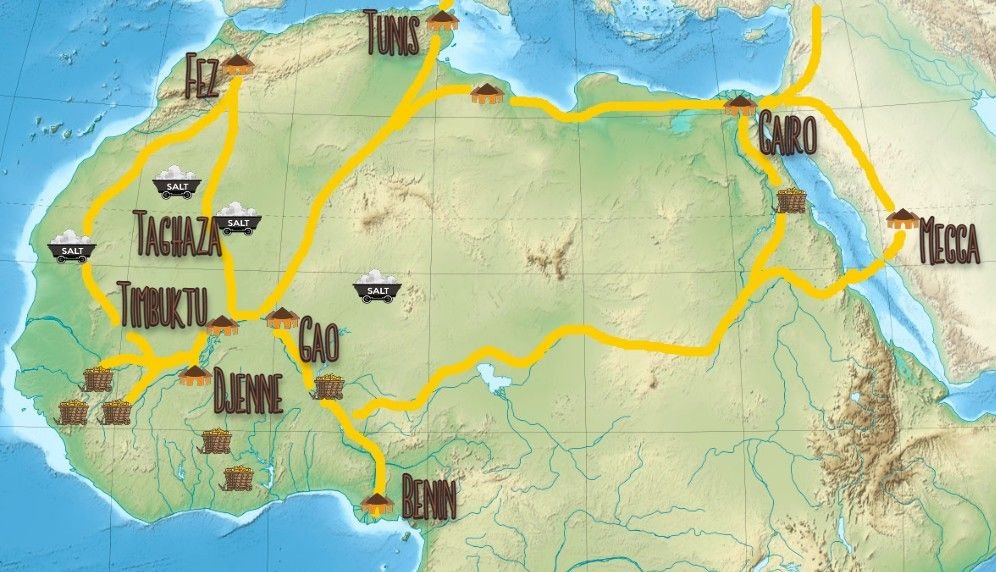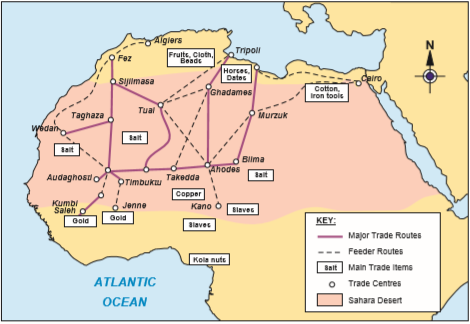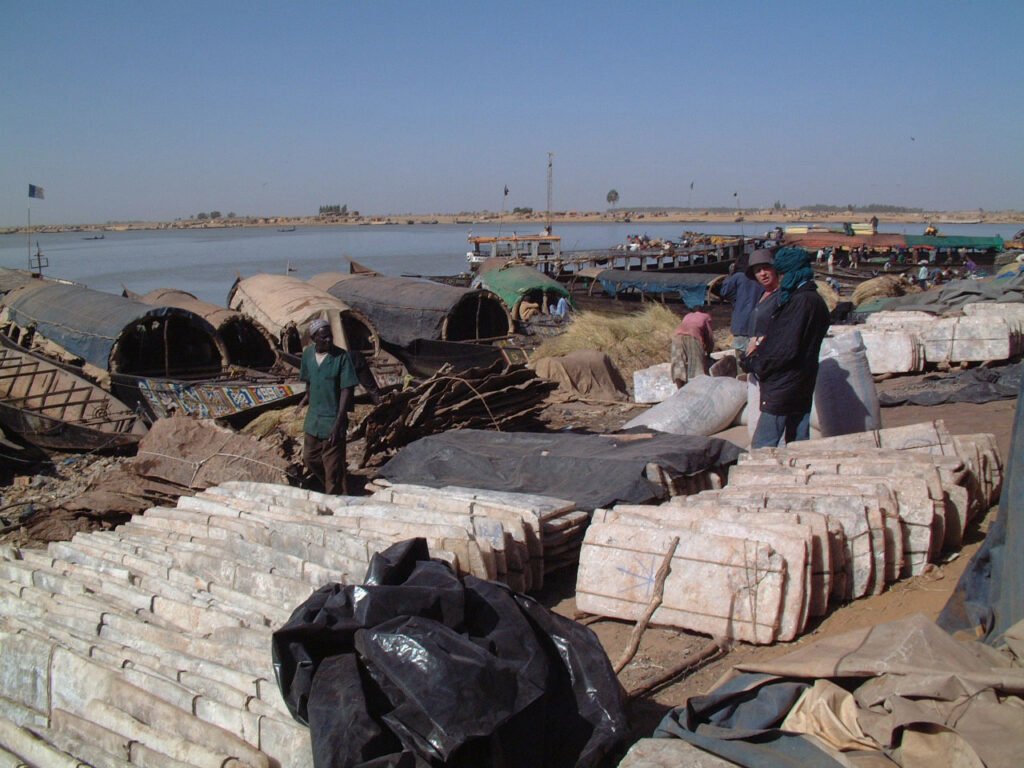
Introduction
The gold and salt trade in West Africa was one of the most powerful economic systems of the ancient world.
For centuries, these two valuable commodities fueled the rise of great empires like Ghana , Mali , and Songhai .
This trade not only enriched West Africa but also connected it to the broader Islamic and Mediterranean world.
Why Gold and Salt Were Valuable
🟡 Gold
- Found in abundance in regions like Bambuk , Bure , and Akanland
- Highly sought after by traders from North Africa and the Middle East
- Used as currency and for making jewelry and royal regalia
🧂 Salt
- Essential for preserving food and maintaining health
- Scarce in tropical West Africa but abundant in the Sahara Desert
- Traded in large slabs from mines like Taghaza and Taoudenni

How the Trade Worked
Merchants traveled across the Sahara using camel caravans , sometimes numbering thousands of animals.
Gold from West Africa was exchanged for salt at key trading hubs such as:
- Timbuktu
- Gao
- Walata
These cities became centers of commerce, culture, and learning.
Taxes collected from traders helped fund strong armies and elaborate royal courts.
Role in Empire Building
The control of gold and salt trade made West African kingdoms extremely wealthy:
- The Empire of Ghana (700–1200 CE) earned the nickname “Land of Gold.”
- Under Mansa Musa , Mali’s wealth from gold and trade amazed the world during his famous pilgrimage to Mecca in 1324.
- The Songhai Empire expanded its influence by securing key trade cities like Timbuktu.

Frequently Asked Questions (FAQs)
Q1: Why was the gold and salt trade important in West Africa?
A: It created wealth, supported powerful empires, and connected West Africa to global trade networks.
Q2: Where did the salt come from in the gold-salt trade?
A: Salt came from the Sahara Desert , especially from mines in present-day Mali and Niger.
Q3: How did camels help the gold and salt trade?
A: Camels could survive harsh desert conditions and carry heavy loads, making long-distance trade possible.
Conclusion
The gold and salt trade was the foundation of West Africa’s medieval prosperity, shaping the region’s history, culture, and global connections.

